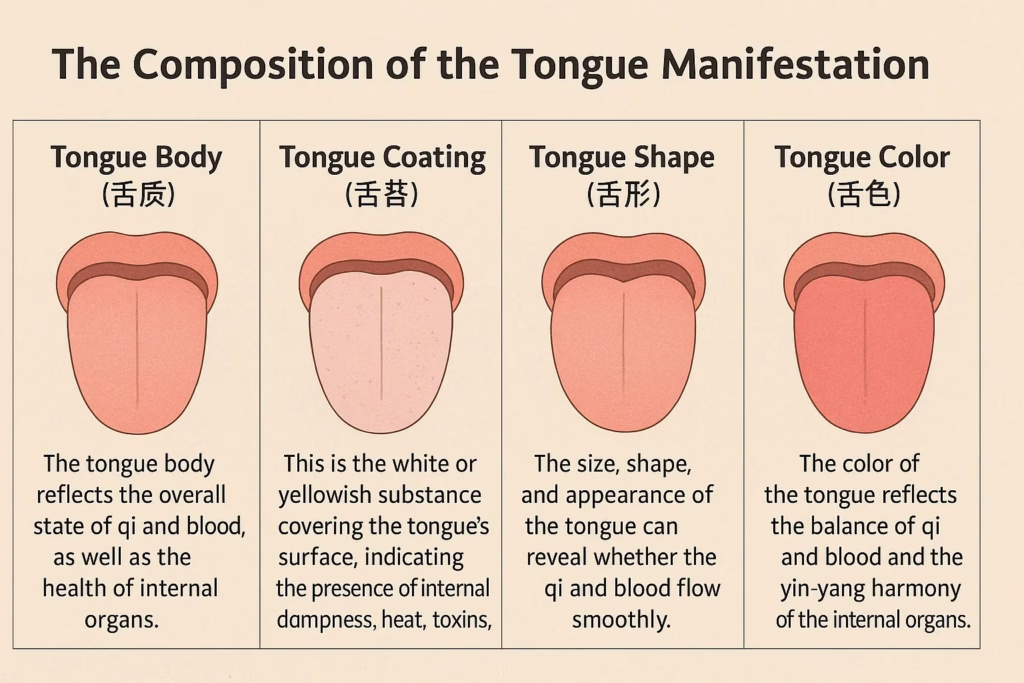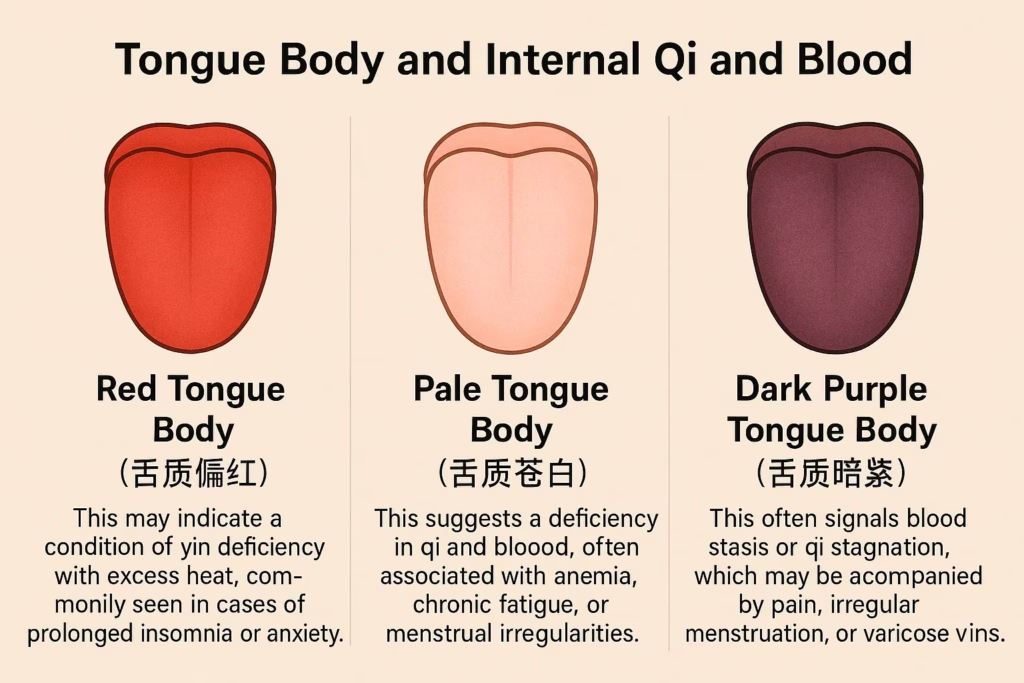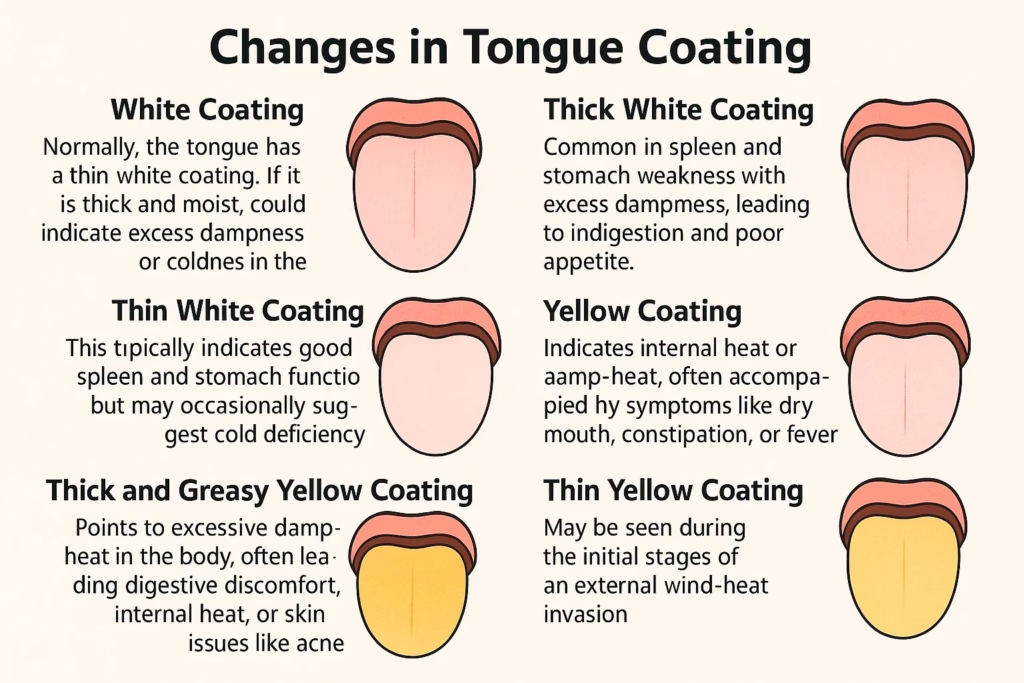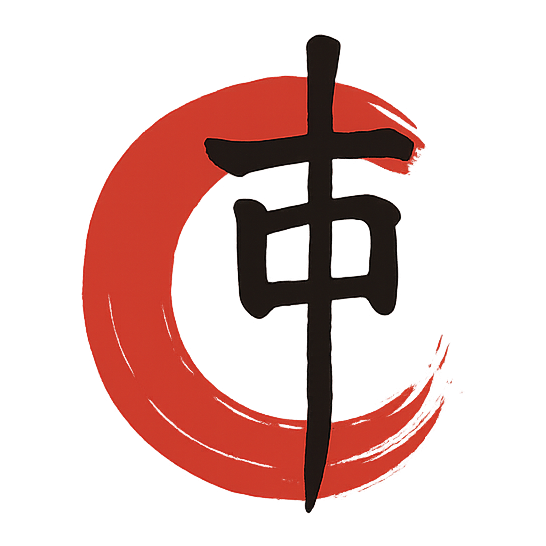🔶 Introduction
In traditional Chinese medicine (TCM), tongue diagnosis holds a crucial position. The tongue is not only an organ involved in digestion but also serves as a “window” into the internal condition of the body. By examining the tongue, TCM practitioners can gain insights into the status of the body’s qi and blood, the balance of yin and yang, and the functioning of internal organs, thus enabling accurate diagnosis and treatment.
This article will explore the basic theory and practical applications of tongue diagnosis in TCM, helping readers better understand how changes in the tongue can reveal early signs of health issues and highlighting the importance of tongue diagnosis in TCM clinical practice.
🔶 The Basic Theory of Tongue Diagnosis
- The Composition of the Tongue Manifestation
Tongue diagnosis in TCM involves more than just examining the tongue’s shape. It includes several key components:

- Tongue Body (舌质): The tongue body reflects the overall state of qi and blood, as well as the health of internal organs.
- Tongue Coating (舌苔): This is the white or yellowish substance covering the tongue’s surface, indicating the presence of internal dampness, heat, toxins, or digestive issues.
- Tongue Shape (舌形): The size, shape, and appearance of the tongue can reveal whether the qi and blood flow smoothly.
- Tongue Color (舌色): The color of the tongue reflects the balance of qi and blood and the yin-yang harmony of the internal organs.
- Tongue Diagnosis and Organ Function
TCM believes that the tongue is closely connected with the five internal organs (the five zang organs and six fu organs). Each organ reflects its functional status through specific areas of the tongue. For instance, the heart’s health can be judged by the color and shape of the tongue tip, while the spleen and stomach are reflected in the tongue’s moisture and coating.
🔶 Practical Applications of Tongue Diagnosis
- Tongue Body and Internal Qi and Blood

- Red Tongue Body (舌质偏红): This may indicate a condition of yin deficiency with excess heat, commonly seen in cases of prolonged insomnia or anxiety.
- Pale Tongue Body (舌质苍白): This suggests a deficiency in qi and blood, often associated with anemia, chronic fatigue, or menstrual irregularities.
- Dark Purple Tongue Body (舌质暗紫): This often signals blood stasis or qi stagnation, which may be accompanied by pain, irregular menstruation, or varicose veins.
- Changes in Tongue Coating

- White Coating (白苔): Normally, the tongue will have a thin white coating. If it is thick and moist, it could indicate excess dampness or coldness in the body.
- Thick White Coating (白苔偏厚): Common in spleen and stomach weakness with excess dampness, leading to symptoms like indigestion and poor appetite.
- Thin White Coating (白苔薄): This typically indicates good spleen and stomach function but may occasionally suggest cold deficiency.
- Yellow Coating (黄苔): Indicates internal heat or damp-heat, often accompanied by symptoms like dry mouth, constipation, or fever.
- Thick and Greasy Yellow Coating (黄苔厚腻): Points to excessive damp-heat in the body, often leading to digestive discomfort, internal heat, or skin issues like acne.
- Thin Yellow Coating (黄苔薄黄): May be seen during the initial stage of an external wind-heat invasion.
- Tongue Shape and Its Connection to Organs

- Swollen Tongue (舌体胖大): Often seen in cases of spleen deficiency and excessive dampness, leading to symptoms such as abdominal bloating and loss of appetite.
- Thin and Small Tongue (舌体瘦小): Common in conditions of yin deficiency and excess heat, manifesting in symptoms like dry mouth, insomnia, and vivid dreaming.
- Teeth Marks on the Tongue (舌头有齿痕): This typically indicates spleen deficiency with dampness or qi deficiency, leading to water retention or fatigue.
🔶 Clinical Application of Tongue Diagnosis: How to Use Tongue Diagnosis in Making a Diagnosis
Tongue diagnosis is not a stand-alone diagnostic tool. It needs to be combined with other methods of diagnosis in TCM, such as observation (望诊), inquiry (问诊), and palpation (切诊), to form a complete diagnostic picture. For example:
- Spleen and Stomach Deficiency (脾胃虚弱): Characterized by a pale tongue body and thin, white, and moist coating, often accompanied by abdominal bloating and lack of appetite. Treatment may include tonifying the spleen and strengthening the stomach, using formulas like Si Jun Zi Tang (四君子汤).
- Liver Fire Rising (肝火上炎): Often indicated by a red tongue tip, a thin yellow coating, and a pointed, narrow tongue shape, with symptoms like headaches, irritability, and insomnia. Treatment might include clearing liver heat, using formulas like Long Dan Xie Gan Tang (龙胆泻肝汤).
🔶 Limitations of Tongue Diagnosis and Cautions
While tongue diagnosis is a vital tool in TCM, it also has its limitations:
- Individual Differences: The appearance of a person’s tongue may vary due to factors such as genetics, age, and lifestyle habits. It is important not to rely solely on tongue appearance for diagnosis.
- Environmental Influences: The coating on the tongue can be affected by diet, medication, or external factors, leading to temporary changes. Therefore, it is essential to consider other diagnostic methods alongside tongue examination.
🔶 Conclusion
Tongue diagnosis is an indispensable tool in TCM, offering direct insight into a person’s health status. By carefully observing subtle changes in the tongue, practitioners can effectively discern imbalances in qi, blood, and internal organ function, enabling the formulation of tailored treatment plans.
Mastering the basics of tongue diagnosis not only helps identify potential health problems but also serves as a reminder to maintain healthy dietary and lifestyle habits to prevent disease.
Annotations:
- Five Zang Organs (五脏): In TCM, the zang organs refer to the five major internal organs: the heart, liver, spleen, lungs, and kidneys. Each organ is associated with specific functions and influences physical and emotional health.
- Fu Organs (六腑): These are the six hollow organs (stomach, large intestine, small intestine, gallbladder, bladder, and sanjiao), which are responsible for processing and transporting substances in the body.
- Si Jun Zi Tang (四君子汤): A classical TCM formula used to tonify the spleen and stomach and improve digestion.
- Long Dan Xie Gan Tang (龙胆泻肝汤): A TCM formula used to clear liver heat and calm the fire rising from the liver, commonly used in cases of liver heat or damp-heat.


发表回复